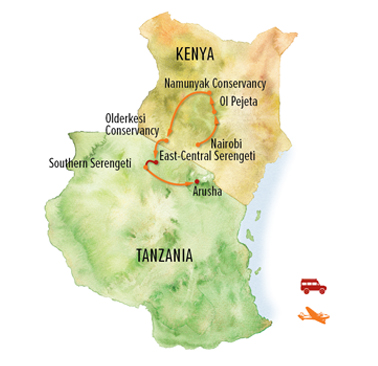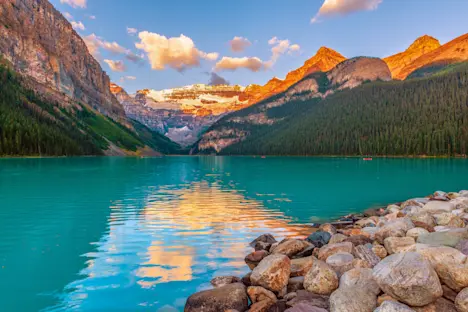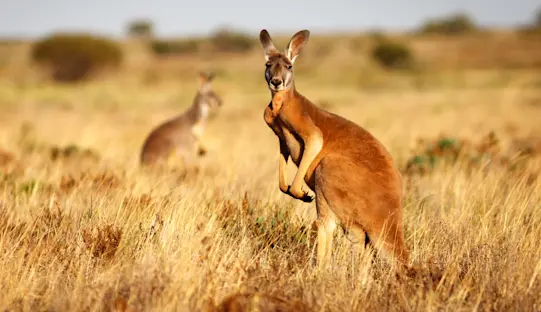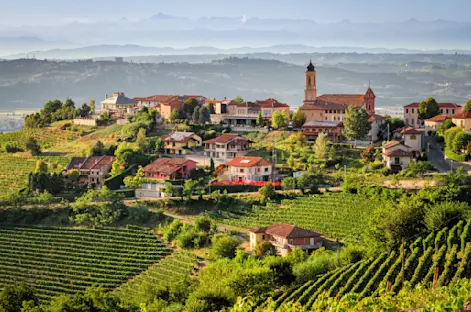December–March Itinerary 2026

Our grand East Africa adventure begins in the traditional safari capital of Nairobi. From the airport, transfer via our electric vehicle to the House of Waine, located in the quiet residential suburb of Karen on the outskirts of the city. Originally built as a lavish private estate, the stately home surrounded by lush gardens is one of Nairobi's most elegant boutique hotels. This evening, learn about all that lies ahead during a welcome dinner with our Expedition Leader.
Fly north to the renowned Ol Pejeta Conservancy, located on the Laikipia Plateau in the shadow of Mount Kenya. A working cattle ranch established in the 1940s during Kenya's colonial days, Ol Pejeta set aside land for rhino conservation in 1988 and has become a respected trailblazer for conservation innovation. Today it is the largest black rhino sanctuary in East Africa and home to the world’s last two remaining northern white rhinos, a staunchly guarded pair of females that we visit in person. The conservancy is also home to the endangered Grevy's zebra and has some of Kenya's highest predator densities, yet still manages a very successful livestock program.
Ol Pejeta seeks to preserve the exceptional biodiversity within its 90,000 acres while supporting the people living on its borders, to ensure that wildlife conservation translates to better education, healthcare and infrastructure for the next generation of wildlife guardians. In 2014, Ol Pejeta achieved IUCN Green List status, one of only two conservancies in Africa to be so recognized. The Green List aims to define excellence in managing valuable natural areas.
Nat Hab's Rhino Camp inside the conservancy is the ideal base from which to explore this diverse wildlife haven that contains many of Kenya's endemic northern species. We'll look for the famous Big Five and much more on day and night wildlife drives and guided walks against the backdrop of snowcapped Mount Kenya. At the end of each exhilarating foray into the bush, return to the comforts of our tented camp, redolent with the ambience of East Africa's classic safari era.
A short chartered flight takes us to the Namunyak Community Conservancy in the heart of Kenya’s northern frontier. Backdropped by the dramatic Mathews Range, this land is home to the Samburu people, semi-nomadic pastoralists who have raised livestock here for centuries while coexisting in harmony with the region’s striking wildlife. Namunyak is one of Kenya’s most pristine wilderness areas, serving as a critical refuge for many wildlife species, with important northern populations of reticulated giraffe, gerenuk, leopard, African wild dog, impala lion, greater kudu and many different birds. The conservancy is particularly important for elephants as they move seasonally between the Mathews Range and the Ngare Ndare Forest near Mount Kenya, a route they have used for decades.
Our base for exploration is Nat Hab’s Elephant Conservation Camp, where seclusion, comfort and exceptional service are hallmarks of this exclusive experience. Our stay includes a private visit to Reteti Elephant Sanctuary, the world’s first such enterprise owned by Indigenous community members. The sanctuary was designed to rescue and release orphaned and abandoned elephant calves while creating much-needed benefits for the local people that live alongside them—inspiring them to recognize the intrinsic value of nature and protecting local wildlife for its benefit to their own well-being.
We have the rare opportunity to go behind the scenes to meet the dedicated local caretakers and to witness firsthand how Reteti is transforming elephant conservation. Observe feeding time, learn the elephants’ individual stories, and support a model of conservation that uplifts both wildlife and the surrounding Samburu community. We’ll also take game drives and guided bush walks to look for roaming elephants and other wildlife, punctuated with peaceful interludes at camp. The entire experience offers a soulful connection to northern Kenya’s people, animals and landscapes—one that few travelers are privileged to encounter, and one that will certainly ignite your own passion for conservation.
Fly this morning to the Maasai Mara, one of Africa’s most legendary wildlife realms. Secluded within the vast private conservancy that borders the Maasai Mara National Reserve, our isolated tented camp is surrounded by all the wonders of the Mara ecosystem without the crowds. With strict limits on guest numbers, the 7,000-acre Olderkesi Community Wildlife Conservancy offers the rare opportunity to experience the Mara’s spectacular wildlife in peaceful seclusion, especially the wildebeest migration. The conservancy serves as a migration corridor for thousands of animals moving between the Maasai Mara National Reserve and the Loita Plains to the east. It is a successful model for how local people are integrating agricultural livelihoods with wildlife protection. By limiting development to certain areas and keeping vast tracts of collectively owned grazing land open and unfenced, Maasai landowners enable wildlife to move freely while also reducing human-wildlife conflict at their homesteads.
As a result, a multitude of species flourishes on the conservancy. Herds of antelope dot the rolling plains while stands of acacia trees shelter prolific birdlife. Rich volcanic soils nurture the grassy savanna where we find more lions per square mile than anywhere else in Kenya. Prolific herds of elephant, giraffe and zebra are also on view. Our activities make the most of our unrivaled access to this wide-open wild country. In addition to daily wildlife drives, enjoy guided bush walks, wilderness picnics, off-road safaris and night drives in search of nocturnal wildlife—exciting activities not permitted in the adjacent national reserve.

Fly to the eastern Serengeti today for a two-night stay at our exclusive safari camp. Surrounded by open range and kopjes—large granite outcrops that dot the plains—our private bush camp offers fabulous wildlife viewing in diverse habitats, particularly of the abundant feline predators that live and hunt in this area. It also provides exceptional seclusion away from crowds. From canvas tents shaded by giant acacia trees, survey 360° views of wildlife traversing the savanna, with more thrilling encounters in store on game drives. The surrounding environs are dotted with dramatic rocky outcrops, and the sunrise over these granite kopjes is glorious. Our camp lies where the short-grass plains meet acacia woodlands. The nearby Nyabogati River sustains year-round wildlife concentrations. From this secluded outpost we can expect unrivaled sightings of the big cats that are so plentiful in this area. Until recently, this area was set aside for scientific research into predators, especially cheetah, but today, we are able to enjoy that same access to this dense feline population. Such close encounters with the Serengeti’s apex predators are sure to enthrall even the most seasoned safari traveler.
Depart this morning for Nat Hab’s private mobile camp in the southern Serengeti, with a game drive en route. Each season, we place our Migration Camp in an area the herds are known to frequent. The days of hunting camps set for the likes of Roosevelt and Hemingway were nearly over until photo safaris gained popularity in the 1970s. Our camp is redolent with that vintage atmosphere, with candlelight dinners presented under canvas and nothing between you and the night sounds of the bush but the walls of your tent.
While home to a profusion of wildlife year-round, there is nothing like the Serengeti during the phenomenon of the Great Migration. We spend three days among the sea of mammals, following them in open-sided 4x4 vehicles that offer superb photography access. During the annual short rains, some 2 million wildebeest trek from Kenya’s Maasai Mara to the southern Serengeti and back again, in search of new grass. They migrate with hundreds of thousands of zebra, whose superior vision serves as an early-warning system for predators. Gazelle and other antelope accompany the huge herds as well.
We are in the region during the time when zebra and wildebeest are giving birth (typically in January and February), and the herds may be mostly stationary. The majority of baby wildebeest are born during a single 3-week window, after most zebra young have emerged, and we’ll hope to see infants, though timing on the calf drop is weather-dependent. Predators seek out the most vulnerable members of the herds, and we may witness a lion seize a sick wildebeest or a cheetah overtaking a newborn that has become separated from its mother. Leopard, hyena and jackal also prey on the migrating herds while vultures hang in the air, waiting to feast on carrion. While the spectacle is at times grim, its primal drama is a wonder to behold.
This morning we fly back to Arusha and transfer to Ngare Sero Lodge at the base of Mount Meru, where a farewell lunch is served on arrival. Day rooms await in this peaceful setting, offering a chance to relax and refresh before your transfer to Kilimanjaro Airport for international departures this evening.

































